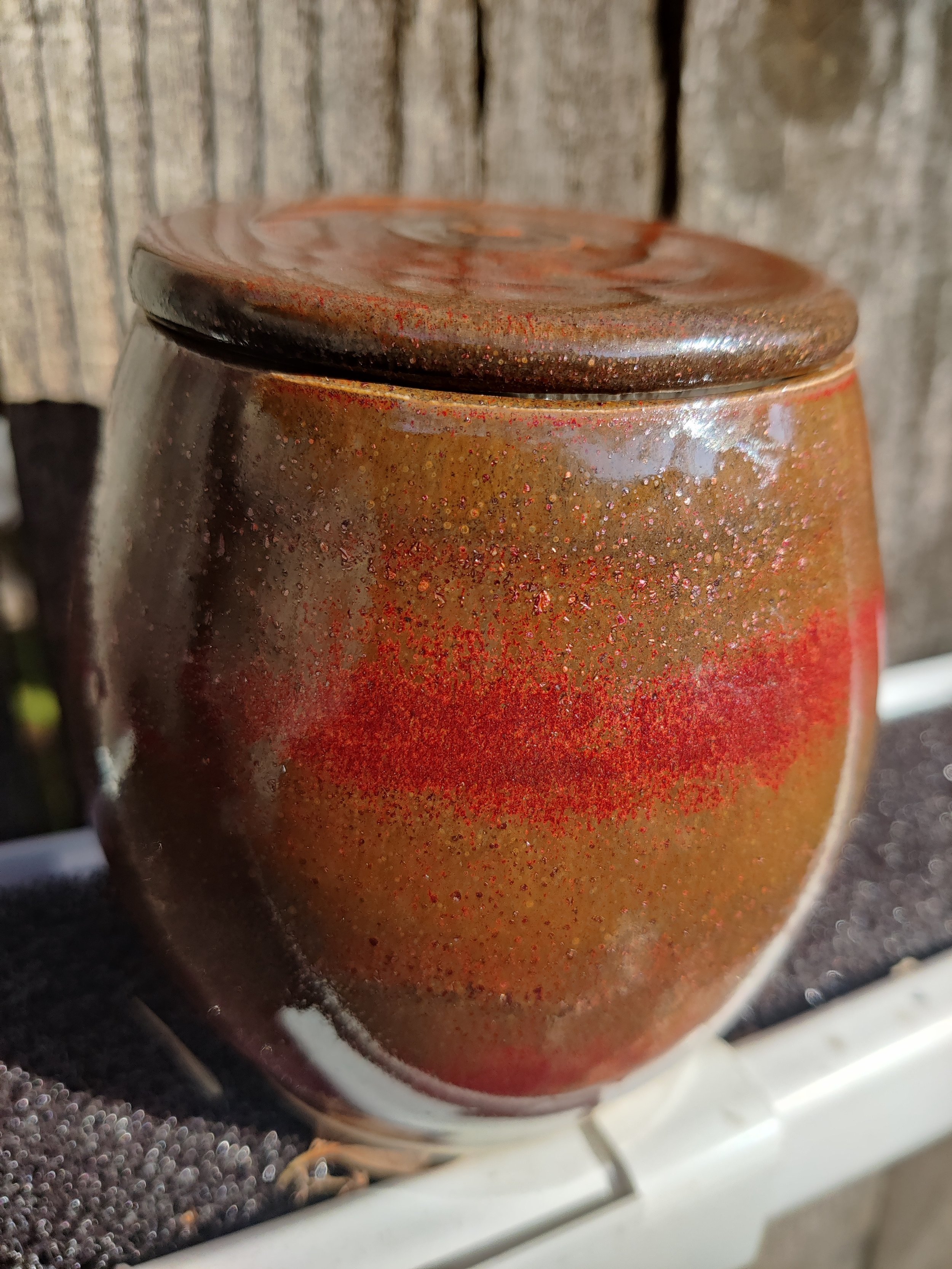In search of red Prt. 2. (The lithium problem)
In taking my classes with CMW, I’m learning I do not want the minerals my glazes are made of to be water soluble. This is because glazes are made of water and minerals and although the water is a transport for the minerals, your bisque ware is porous. The water will be absorbed into the clay body along with any water soluble minerals in that water instead of on the surface of the pot where it belongs. I theorize that if those minerals are not on the outside of the clay body they will not react with the other minerals in the glaze as well as they would if they were not water soluble. This can mean glaze might not come out the way you intend it to. I also suspect that excess minerals in the clay pores might cause issues with the clay body itself. I don’t know how to test the purity of different types of clay so I can’t really prove that last part.
Hypothesis: Spodumene is a better source of Lithium than Lithium Carbonate, due to Lithium Carbonate being water soluble.
To test this I’ve fired one glaze with two different compositions. Although the chemistry is near identical, one glaze uses Lithium Carbonate while the other works around the chemistry to use spodumene as the lithium source. Both glazes were fired in the same kiln, have the same specific gravity, same feldspar, everything except the lithium source. The following shows my results.
Note: All of these tests have Yellow Iron Oxide (YIO) as a colorant instead of Red Iron Oxide (RIO).
Red jacket with lithium carbonate, credit recipe to Joseph Brazda- Recipe : https://glazy.org/recipes/68659
B-mix w/ grog at cone 6 ox with a 30min hold at 1800F.
With an extra stroke of glaze after drying phase.
Pic 1
Red jacket with lithium carbonate, credit recipe to Joseph Brazda- Recipe : https://glazy.org/recipes/68659
B-mix w/ grog at cone 6 ox with a 30min hold at 1800F.
Pic 2 (outside of bowl)
Red jacket with lithium carbonate, credit recipe to Joseph Brazda- Recipe : https://glazy.org/recipes/68659
B-mix w/ grog at cone 6 ox with a 30min hold at 1800F.
Pic 3 (inside of bowl)
Pic 1 (the jar): I layered an extra coat of the glaze to test out the clay body reaching maximum absorption. This one example proves my hypothesis seems to be correct, although for it to be 100% it would have to be tested many times over with a similar outcome.
Pic 2: I did not put an extra coat of glaze. This is Red Jacket with a 30 min hold. I can still see more undeveloped crystals and brown then I would like.
Pic 3: A closer look of the inside of the bowl where you can see a very close shot of the glaze.
In the second test I used a revised version of Red Jacket. One with no Lithium carbonate flux. This flux is replaced with spodumene to supply lithium instead. Again the glaze recipient is from Joseph Brazda -
Recipe : https://glazy.org/recipes/76946
This pot is on the same clay body, and the rim was dipped a second time to see if it could yield more red. There was no significant change in color with the extra layer, but it had a far more constant red than the original Red Jacket with lithium carbonate. Of course I tested this glaze on more than just this one pot. The glaze is very consistent with very little to no run.
Red jacket revised on a red stone clay body. Cone 6 ox with 30 min hold at 1800F.
A look of the inside of the red stone cup.
Textured mug with red jacket revised. Cone 6, 30 min hold at 1800F.
This had a fantastic consistency.
These findings align with my experience in other lithium carbonate glazes. I often double dip them for the above reasons. Keep in mind this is one test among many that should be done to confirm this. The next set of tests will probably be on porcelain as these are all stoneware clay types.







